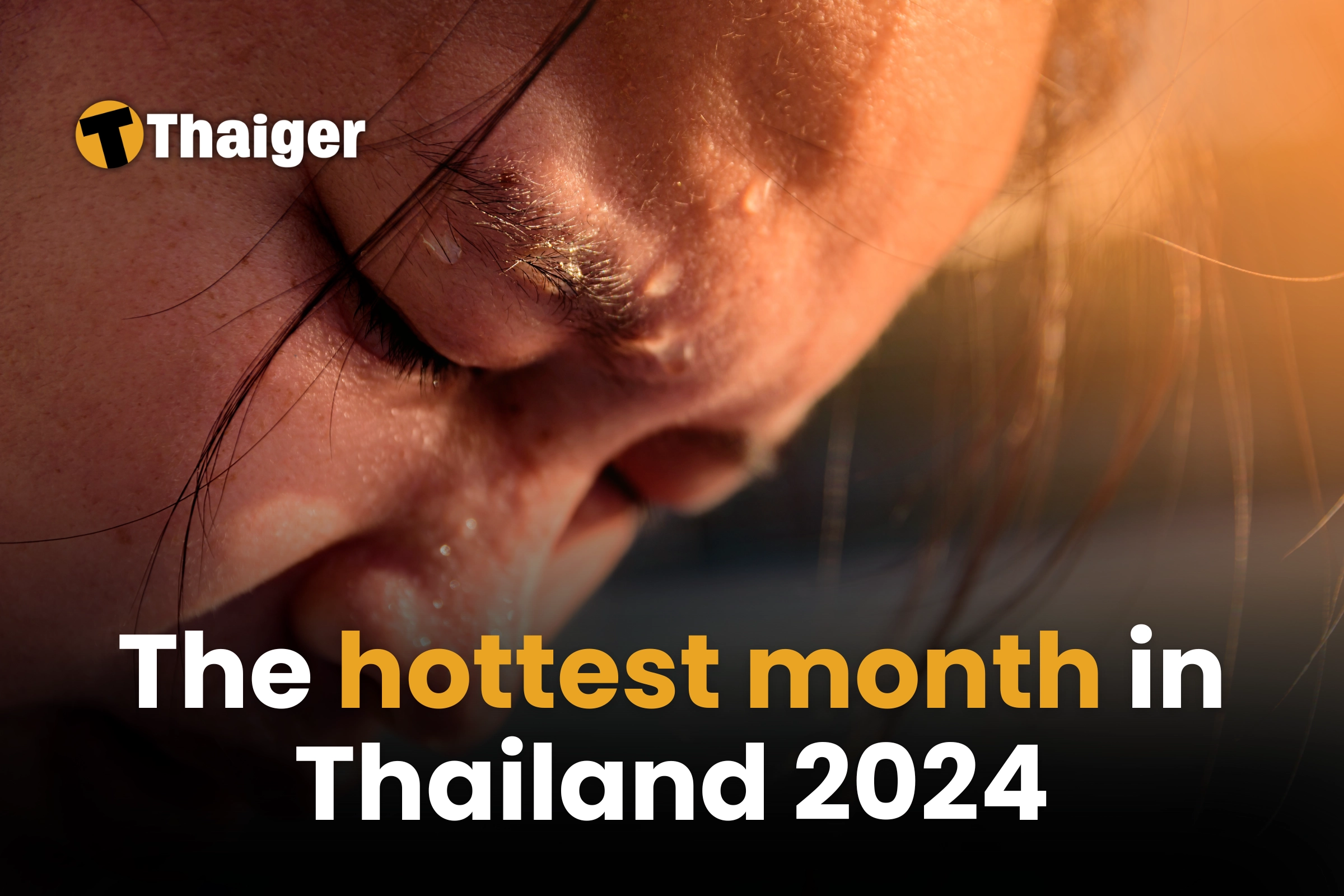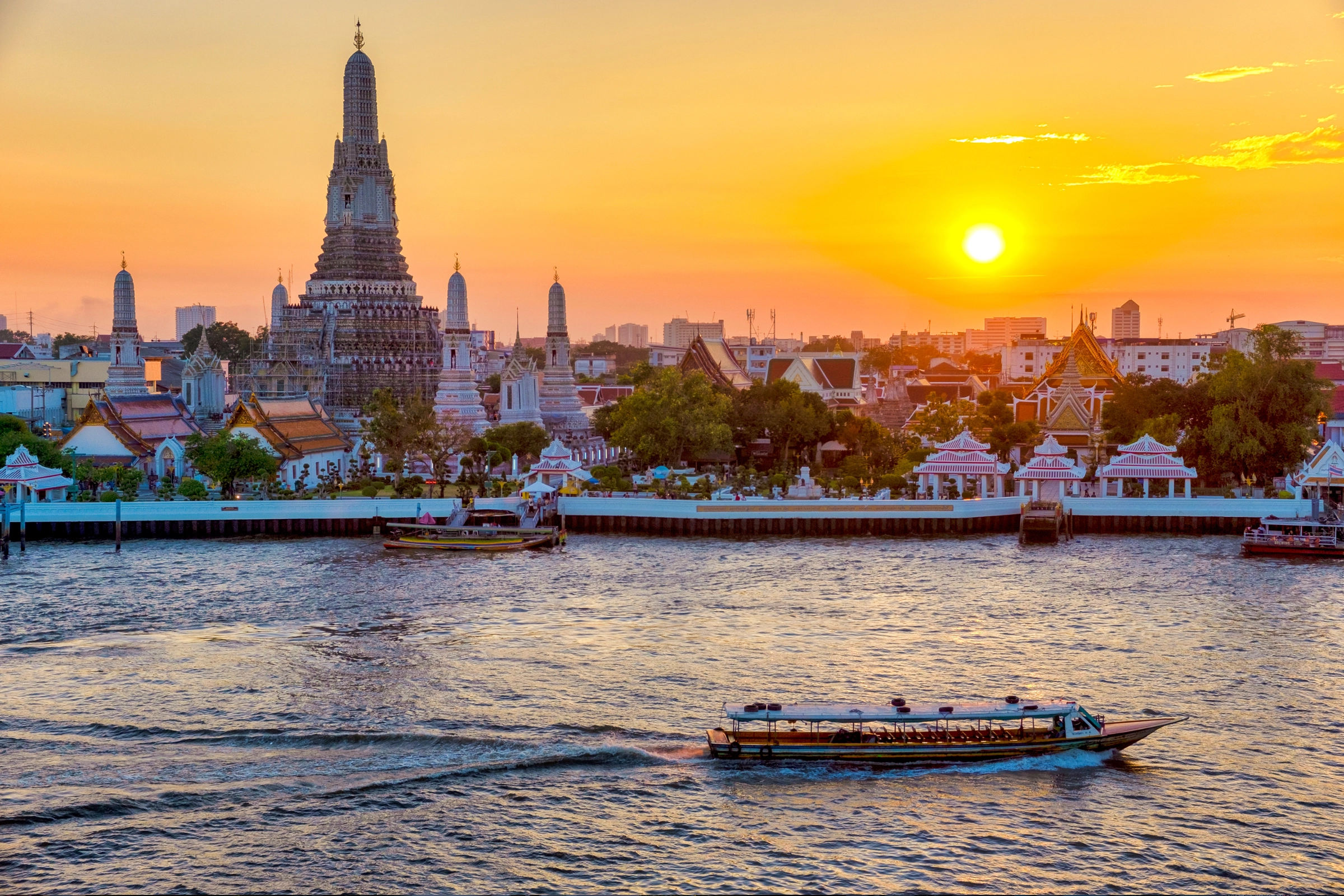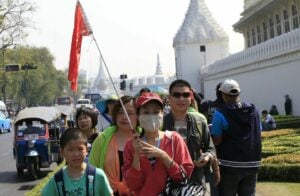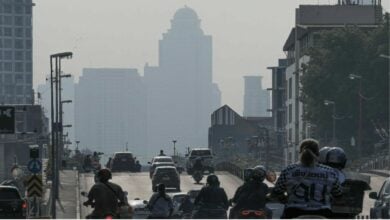The hottest month in Thailand 2024

Thailand is known for its year-round warmth, but it also has significant temperature fluctuations depending on the region, time of year, and even day-to-day weather patterns. If you’re an expat living here, understanding the country’s climate can make a big difference in how you plan your activities, especially during the hottest months. Here’s a breakdown of Thailand’s temperatures by region and a month-by-month look at when and where you can expect the most intense heat in 2024.
Year-round warmth and temperature fluctuations
Thailand’s climate generally falls into three seasons: hot, rainy, and cool. Although the ‘cool’ season doesn’t mean chilly weather, it’s more comfortable, with temperatures ranging from 20-30°C (68-86°F). For many, the rainy season (usually May to October) brings relief from the heat, though it’s also more humid. But the hottest season, usually from March to May, is when Thailand’s temperatures truly soar, and April often sees the most extreme temperatures.
Hottest month in 2024
According to the Thai Meteorological Department, April 2024 was the hottest month with average temperatures reaching 42.9°C (109.2°F) in many areas. This marks a significant rise compared to previous years, with temperatures forecasted to be approximately 2.6°C above normal nationwide. The extreme heat is attributed to a persistent heat low-pressure cell affecting upper Thailand throughout the month.

The temperature in each region
1. Central Thailand (Including Bangkok)
- Central Thailand is known for high humidity and extreme heat during the hot season. In 2024, average temperatures are projected to reach around 42.0-44.0°C (107.6-111.2°F) in this region, particularly in city areas like Bangkok, which may feel even hotter due to the urban heat island effect.
2. Northern Thailand (Chiang Mai, Chiang Rai)
- The north has more noticeable seasonal changes, with cooler winters and very hot summers.
- The peak heat generally comes in April, often surpassing 43°C (109°F). The highest recorded temperature in this region in April 2024 was 44.0°C in Lampang.
3. Northeastern Thailand (Isan Region)
- Known for extreme heat during the hot season, Isan can experience temperatures above 40°C (104°F), especially in provinces like Udon Thani and Nakhon Ratchasima. In April 2024, some areas recorded temperatures as high as 44.1°C.
4. Southern Thailand (Phuket, Krabi, Surat Thani)
- Southern Thailand is influenced by monsoon patterns, so temperatures are usually moderate.
- Though it’s warm year-round, the hottest period in the south is slightly earlier, around February to April, with averages of 33-35°C (91-95°F).
Temperature peaks by month (2024)
The following table provides an estimate of monthly temperature peaks by region for 2024, to give you a clearer picture of what to expect as the year unfolds:
| Month | Northern Region (°C) | Northeastern Region (°C) | Central Region (°C) | Southern Region (°C) |
|---|---|---|---|---|
| January | 34 | 34 | 34 | 30 |
| February | 36 | 36 | 36 | 31 |
| March | 39 | 40 | 40 | 32 |
| April | 43 | 44 | 42 | 35 |
| May | 37 | 38 | 38 | 32 |
| June | 35 | 36 | 36 | 31 |
| July | 34 | 35 | 35 | 30 |
| August | 33 | 33 | 34 | 30 |
| September | 32 | 32 | 33 | 29 |
| October | 30 | 31 | 31 | 28 |
| November | 27 | 27 | 28 | 27 |
| December | 25 | 25 | 26 | 26 |
Note: Temperatures are averages and can vary based on specific locations within each region. (based on data from the TMD)
Useful tips for expats living in Thailand
1. Beat the heat with local solutions
Thai people have plenty of tricks for staying cool. Try dressing in breathable, light-coloured fabrics like cotton or linen, and using cooling powders (popular in local shops) to combat heat rashes. Drinking fresh coconut water is another local favourite for staying hydrated.
If you’re interested more in clothes, we also have an article guide on the best clothes to wear for Thai heat.
2. Keep an eye on the UV index
The UV index in Thailand can get dangerously high, especially in April. According to the World Health Organisation, a UV index of 11 or higher is considered ‘extreme’ and can lead to sunburn in just 10-15 minutes. In Bangkok and other open areas, UV levels during the hottest months often exceed 11. Wear sunscreen, seek shade, and consider protective clothing.
3. Plan travel around the weather
Thailand is beautiful year-round, but certain destinations shine at different times. During the hot season, consider spending more time in beach destinations like Phuket or Koh Samui, where the sea breeze can be refreshing. In the cooler season, it’s ideal to explore northern Thailand’s mountains for hiking or cultural sightseeing without overheating.
4. Watch out for heat-related health risks
Living in a hot climate has health implications, especially for those who aren’t used to it. Heat exhaustion and dehydration are common, so stay hydrated and avoid outdoor activities during peak sun hours (10am to 3pm). If you start feeling dizzy, nauseous, or excessively sweaty, it’s best to rest in a cool place.
5. Adjust your AC for comfort and health
In Thailand, air conditioning is essential but can lead to temperature shocks, especially when going from a cold room to the hot outdoors. To avoid this, set your AC to around 25°C (77°F), which keeps your room cool without creating a stark contrast when you step outside.
Surprising facts you might not know

Thailand’s temperature rank
According to recent climate studies, Thailand ranks among the hottest countries in Southeast Asia, especially in city areas. Cities like Bangkok and Chiang Mai are particularly known for their heat due to factors like concrete infrastructure and limited green space.
Bangkok’s urban heat island effect
Bangkok consistently feels hotter than rural areas due to the ‘urban heat island’ effect. This phenomenon occurs when concrete, asphalt, and buildings trap heat, making cities warmer than surrounding areas. Studies show that Bangkok can be up to 4°C (about 7°F) hotter than nearby regions, especially in densely populated districts.
April’s temperature spike during Songkran
April is the hottest month, and coincidentally, it’s also the time for Songkran, the Thai New Year, known for its massive water fights. The water celebrations serve as a fun cultural tradition and a clever way to cool off during Thailand’s hottest days.
Cooling off in malls
In Bangkok, one of the most popular ways locals and expats alike beat the heat is by spending time in malls. Some of Thailand’s largest malls, like CentralWorld and Iconsiam, offer more than just shopping; they have recreational areas, food courts, and even indoor ice rinks to help you escape the heat.
Thailand’s weather can be intense, especially during the hottest months. Knowing what to expect month by month and region by region can help you plan better and make the most of your time here without letting the heat take a toll on your health or comfort.
Whether you’re looking to escape the city, spend time by the coast, or prepare your home for the hottest days, It’s better to know about Thailand’s unique climate to live comfortably and safely in the Kingdom.
Don’t forget to check out our article on the coldest month in Thailand too.
FAQs about Thai weather
What is the best time to visit Thailand?
The best time to visit Thailand is generally from November to February when the weather is cooler and less humid, making it ideal for outdoor activities and sightseeing.
What are the hottest months in Thailand?
April is typically the hottest month across the country, with temperatures often exceeding 40°C (104°F) in many regions, especially in Central and Northeastern Thailand.
How does the climate vary between regions in Thailand?
Northern Thailand experiences cooler temperatures in winter and hot summers, while Central Thailand is hot and humid year-round. Southern Thailand has a tropical climate with distinct wet and dry seasons, varying by coast.
How humid does it get in Thailand?
Humidity levels can be quite high, often reaching around 75-90%, especially during the rainy season. This can make temperatures feel hotter than they actually are.
Are there any health precautions I should take regarding the heat?
Staying hydrated is crucial. It's advisable to drink plenty of water, avoid strenuous activities during peak heat hours (usually midday), and wear sunscreen to protect against UV rays.
How does climate change affect weather patterns in Thailand?
Climate change has led to increased temperatures and more unpredictable weather patterns, including intensified rainfall during the monsoon season and prolonged periods of heatwaves.
































